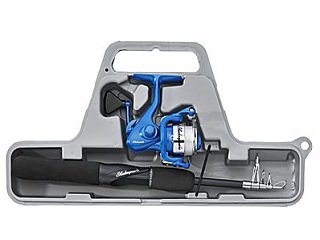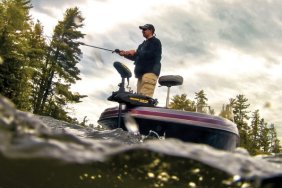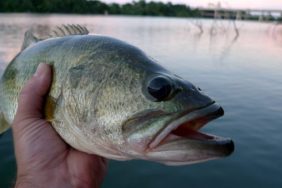 Traveling to new waters in search of exotic species and exciting challenges is one of the many appeals of sport fishing. Whether it’s the other side of your state, country, or overseas, new bodies of water mean a chance to put your fishing skills to the test and see exactly what you’ve learned throughout the years. Making such trips with one or two-piece rods can be a little difficult, however, especially when you travel by plane. Sure, there are rod cases designed for that, but they can be cumbersome and you’re still trusting your expensive rod to the airline (something with which I’ve had terrible experience.) One way around this is picking up a travel rod. There are a few different styles available from trusted companies, and today we’ll explore the pros and cons of the different types of travel rods to give you a better idea of whether or not they’re right for you.
Traveling to new waters in search of exotic species and exciting challenges is one of the many appeals of sport fishing. Whether it’s the other side of your state, country, or overseas, new bodies of water mean a chance to put your fishing skills to the test and see exactly what you’ve learned throughout the years. Making such trips with one or two-piece rods can be a little difficult, however, especially when you travel by plane. Sure, there are rod cases designed for that, but they can be cumbersome and you’re still trusting your expensive rod to the airline (something with which I’ve had terrible experience.) One way around this is picking up a travel rod. There are a few different styles available from trusted companies, and today we’ll explore the pros and cons of the different types of travel rods to give you a better idea of whether or not they’re right for you.
Telescopic Rods
Probably the more well-known style of travel rods available today, telescopic rods, such as the models made by Shakespeare, collapse within themselves down to an easily transportable size. These models are available in spinning and casting styles, too, and come as a travel kit, complete with a reel and some tackle.
You do have some potential issues with telescopic rods, though. For instance, fail to secure each segment tightly and you’ll find it collapsing on its own or worse, spinning during use, which will cause it to bend unnaturally and break under strain.
Telescopic rods tend to be less costly than other styles, running around $35, but as you know by now, often times you get what you pay for. Shakespeare is well-known for its tough-as-nails Ugly Stiks, but compared to other rods—even in the same price range—they can fall short. If you consider yourself a more serious angler, then there are better options than a telescopic rod.
Multi-Piece Rods
While telescopic rods are what most people tend to think of when they think of travel rods, multi-piece models are definitely the more popular and reliable choice. Available from companies like Okuma, Daiwa, Shimano, St. Croix, Fenwick, and Bass Pro Shops, these rods usually come in three pieces that fit together like a normal two-piece model. They even tend to come with their own nylon or hard-shell travel case that can be slipped inside your carry-on luggage or a suitcase.
They can be a bit on the pricier side, with Daiwa’s models costing around $220 and Bass Pro’s coming in at $100, but if you travel enough and fish enough, they’re well worth it. I’d rather spend more on a quality travel rod that I can fit inside a suitcase than trust the airline with my expensive one or two-piece rod.
Some anglers maintain that two and three-piece rods lose some structural reliability where the pieces fit together, but I’ve yet to have any rods break on me in my time. I’ve used travel rods myself and have spoken with several others who’ve done the same and I’ve heard nothing but praise.
While they’re not your trusted rod that’s been your go-to for years, travel rods are ideal for trips where you’ll be spending some time on the water. Multi-piece models are a better bet, but either one will work just fine to suit a variety of experience and needs. Keep them in mind the next time you travel.








